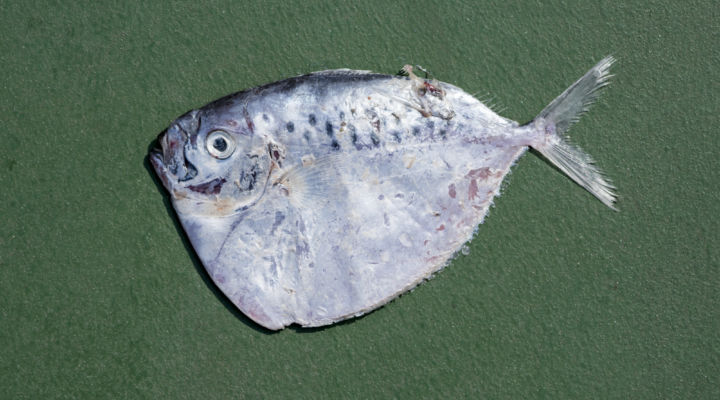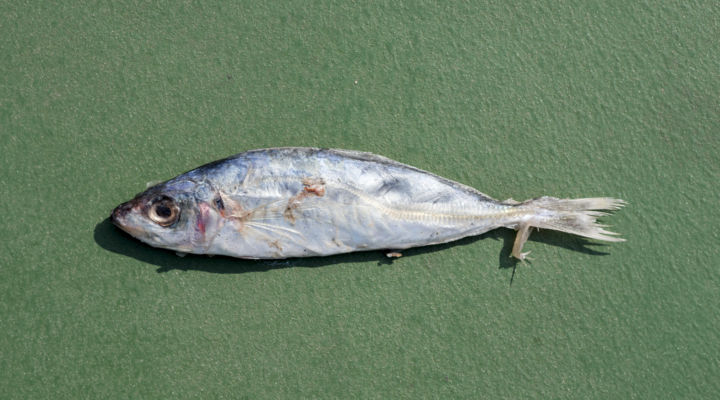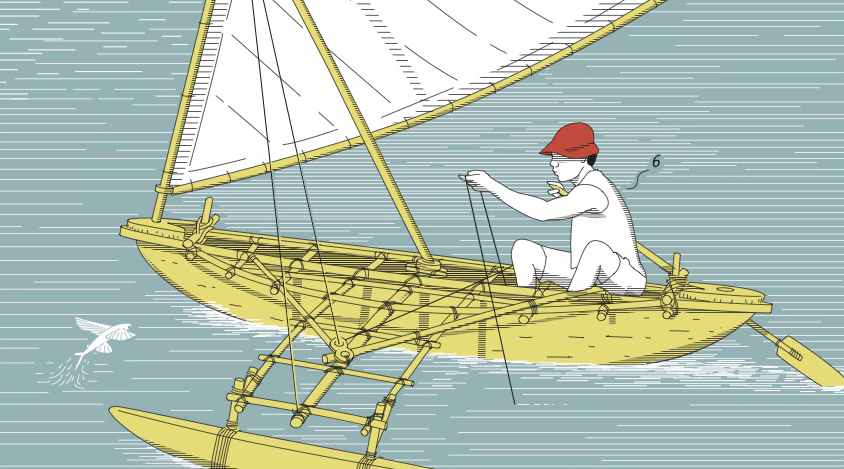EDITOR’S NOTE: The focus of Chow and Lin’s practice lies in their methodology of statistical, mathematical and computational techniques to address global issues since 2009. Through a typological, photographic approach, Chow and Lin’s projects are driven by their discursive backgrounds in economics, public policy, media, and these are further augmented by enduring exchanges with specialists from those fields. Their works have been referenced by the World Bank and exhibited at the Les Nuits Photographiques (Paris), Beijing Photo Biennial, China Central Academy of Fine Arts Museum (Beijing), United Nations (Bangkok), and at the Hermitage Museum (Saint-Petersberg), just to mention a few. Their project Equivalence – The Ecological Footprint of Fish was commissioned by Greenpeace.
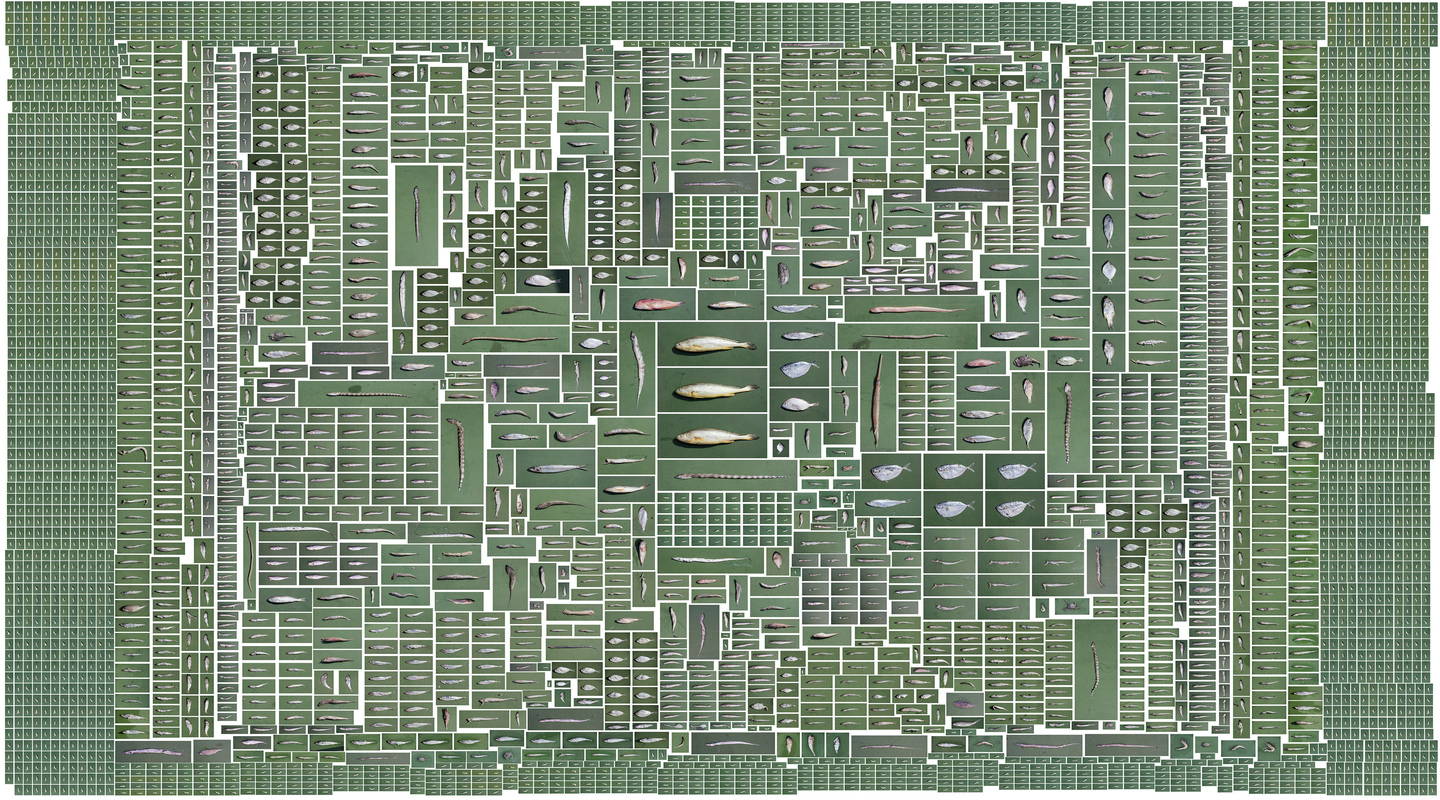
Equivalence – The Ecological Footprint of Fish is a project that examines the impact of farm fishing through the large yellow croaker (⼤⻩鱼) one of China’s most popular fish. Working with scientists, fish experts and local government officials, Chow and Lin traversed four towns in Fujian China to build a tessellated mosaic of fish portraits to see how much wild small fish is needed to sustain fish farming. The answer is 7.15kg, 39 species, more than 4000 wild small fish to raise a single kilogram of large yellow croaker.
They are the three singular fish at the centre of the picture.
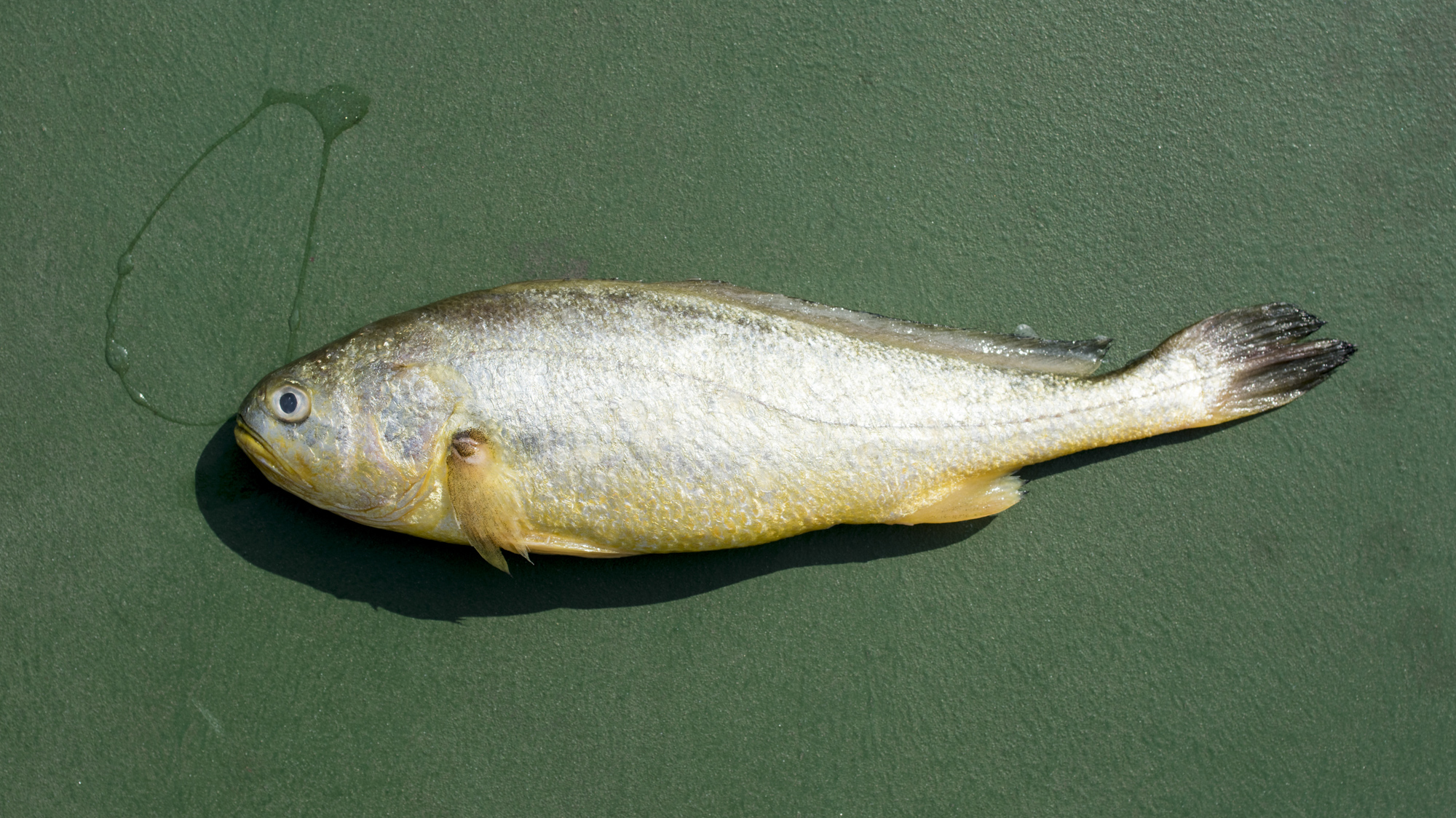
The large yellow croaker is among China’s most popular fish, and they used to be caught in the wild for generations. Overfishing coupled with a sharp rise in consumption in China has led to a near extinction of the large yellow croaker species in the wild. Today, virtually every large yellow croaker is farmed, and they are fed with wild small fish caught in the nearby China seas.
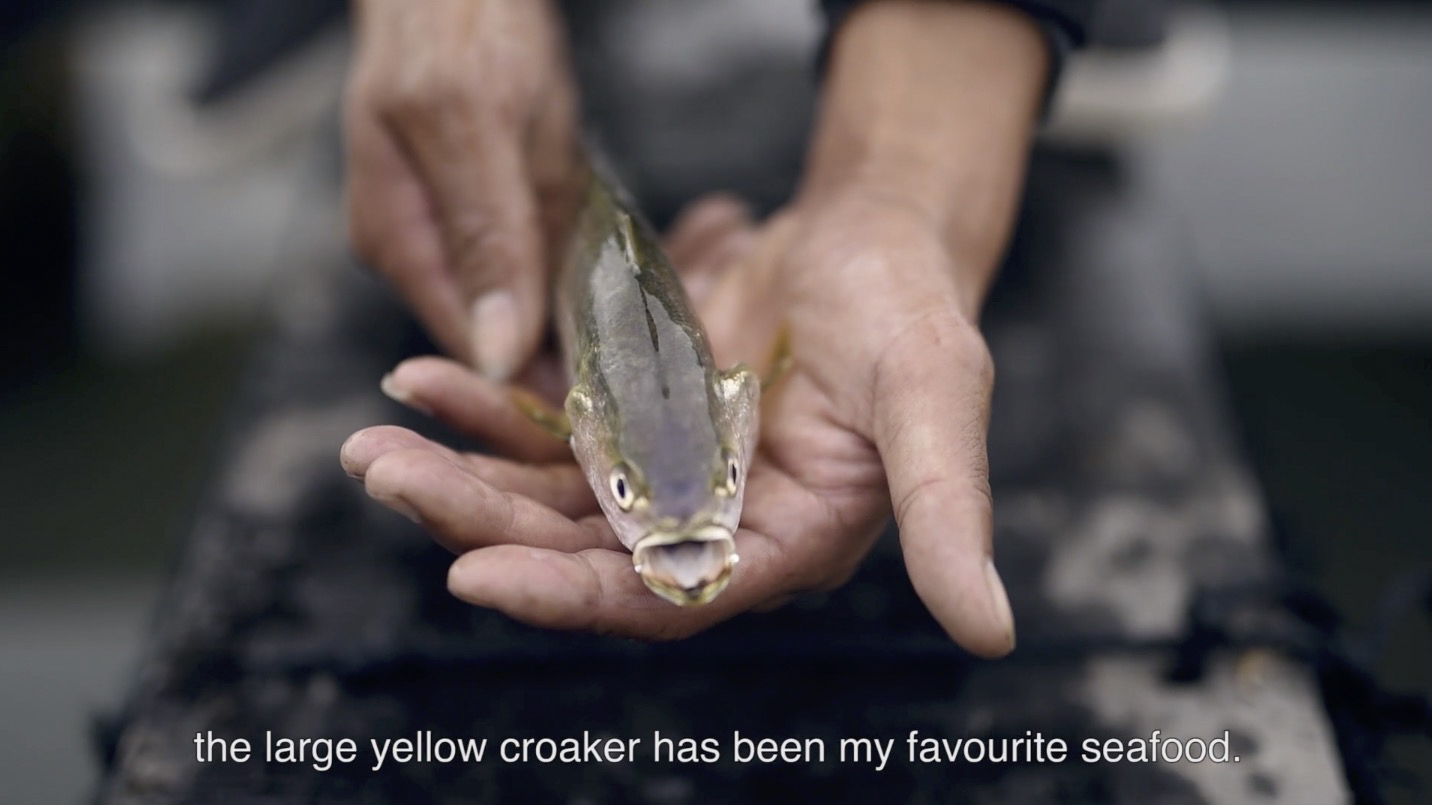
Wild small fish are also known as trash fish, and they comprise a mixture of poorly preserved, small sized and low commercial valued species of fishes and invertebrates. Not directly consumed by human, trash fish are mainly used as feed for farmed fish and other farmed animals. Based on research across 22 fishing ports, with 80 samples of trash fish, 38.61% of these trash fish account for edible commercial species while 75% of them were in their juvenile size range. Trash fish account for 49% of all trawler catch in China, and this has severe consequences in the natural eco system in the China seas. In 2015, China’s marine fishing catch reached 13.14 million tons, 1.5-1.6 times the suggested total allowance catch of about 8-9 million tons according to expert study . Illegal fishing continues to be a major problem, despite a slew of strict regulations on fishing periods.
Taking East China Sea as an example, in the last half century, though the total marine fishing catch kept growing, the percentage of the traditional high valued fish in the total catch continue to decrease. The increase of the total fishing catch are mainly from the low trophic level fish and the trash fish. China’s coastal marine ecosystem has already been fragile due to years of overfishing, resulting in important commercial species depleting; trash fish fishery is speeding up this horrible trend. On the one hand, juvenile individuals of important commercial species have been largely exploited in trash fish fisheries, further threatening future existence of such resources. On the other hand, fishing down the food web is threatening the very basis of the China’s marine ecosystem, by catching low trophic level fishes such as anchovy and sardines. If this status quo continues, fisheries will collapse completely.
As a country that contributes to over 60% of the world’s aquaculture production, what happens in China has significant implications for the rest of the world in terms of sustainable fisheries reform and the practice of eco-friendly fish farming and healthy fisheries. Currently, the development of the aquaculture industry creates high demand for trash fish as feed input and provides stable profits in return.
As a result, many fishermen go to extreme lengths to fish trash fish, including using illegal fishing methods such as extremely small fishing mesh, electric nets and other extinctive fishing gears. Other than the prominent negative impact on marine resources, trash fish fishery also largely sacrifice the potential economic value of juvenile edible commercial fish.
Currently, the average market price of trash fish used as fish feed is RMB 1-4/kg, while the price of mature edible commercial fish can be several times or several tens of times that market price. Through three randomly selected samples of juvenile fish samples, it is estimated that while the three samples total cost as fish feed was just 3 RMB, their potential cost as mature fish could have been up to 66 RMB to 344 RMB. Each year, 400,000 tonnes of wild small fish are caught and ground into large yellow croaker feed, and 7.17 million tonnes of wild small fish are caught in total. China accounts for more than 60% of the world’s aquaculture output.
Chow and Lin’s work can be seen at www.chowandlin.com.



